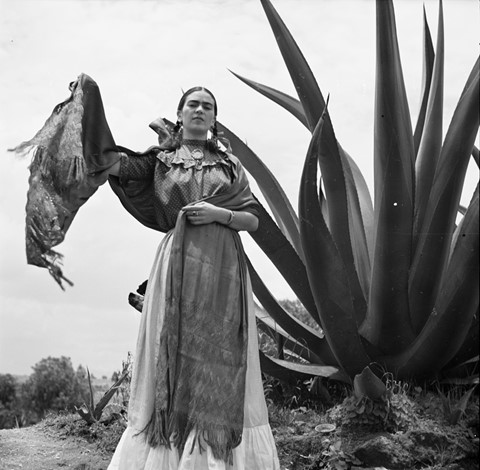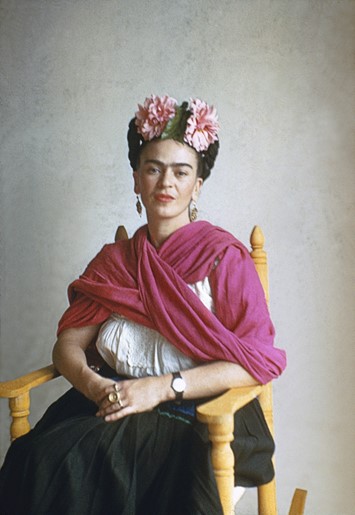In celebration of the Fashion & Textile Museum's latest exhibition, AnOther breaks down the fashion codes of Frida Kahlo
Surrealist painter Frida Kahlo gave clothes a deeper meaning than her colourful self-portraits initially suggest. Her structured corsetry helped align a damaged torso, her expansive patterned dresses shielded a wasted right leg, and her floral headbands were a delicate representation of her own vulnerability. Her tempestuous relationship to painter Diego Rivera spanned twenty-seven years, driven by passion yet riddled with pain. Despite his repeated infidelity, Rivera's adoration for his wife was demonstrated after her death, when, heartbroken, he refused to let anybody touch Kahlo’s dressing room. It remained intact for fifty years: an archive of vibrant prints, huipil tops, orthopedic shoes, rebozo scarves and ornate crowns.
Kahlo used clothing to hide her imperfections, and in turn created an iconic image that champions creativity, bravery and the colourful spirit of Mexico. Sixty years on from her death, she has become a fashion genre within her own right. She is a continual inspiration for designers, influencing Givenchy, Comme des Garçons and Jean Paul Gaultier – who dedicated an entire runway show to the late painter in 1998. In celebration of Made in Mexico: The Rebozo in Art, Culture and Fashion, the new exhibit at the Fashion and Textile museum, AnOther breaks down the fashion codes of Frida.
1. The Rebozo
This traditional Mexican scarf, which acts as the focal point of the exhibition, was made famous by Kahlo. She wore the long, rectangular scarf wrapped around her body or tied in her hair for the majority of her paintings. Traditionally, the scarf is said to make a woman appear more graceful, which is perhaps why Kahlo adopted the style.
2. Unibrow
It is an indisputable fact that Frida Kahlo immortalised the unibrow. Her daring black stripe represents her refusal to conform to the conventional norms of Hollywood beauty and has since inspired the likes of Kris Van Assche in 2008, Kenzo in 2011 and Comme des Garçons, over and over again. It took on various forms in her paintings, from the wing of a hummingbird to thick, exaggerated brush strokes.

3. Tehuana dress
The Tehuana style of dress emerged from the Tehuantepac region of South Mexico. Kahlo adopted this style, dressing in huipil tops and floor-length sweeping skirts, with bright floral prints, thick lace hems and ribbon trims. She mixed the authentic silhouette with fabrics imported from China and Europe, creating her own eclectic style. According to legend, Tehuana women were figures of authority within their society; perhaps, by taking on their traditional dress, Kahlo was displaying her own strength and will.
4. Jewellery
Kahlo completed her look with quantities of elaborate jewellery, from lariat necklaces and mismatched earrings to skull pendants and strung shells. She favoured pre-Christopher Columbus handcrafted pieces by native American Indians, the majority of which are now kept at the Frida Kahlo Museum in Coyoacan, Mexico, located inside Frida's family home, La Casa Azul.
5. Hair braids
Kahlo often wore her black hair in thick braids piled over the top of her head. She teamed this with floral headpieces: finely wrought crowns of wild flowers and ribbon. For a series of 1940’s self-portraits, she wears an elaborate wreath, with tears dripping from her eyes. The hairstyle, which has been repeatedly revived over the years, has been advocated by Dolce & Gabbana, Piers Atkinson, Eugenia Kim and Marc Jacobs.
Made in Mexico: The Rebozo in Art, Culture and Fashion is at the Fashion and Textile Museum until August 31.
Text by Mhairi Graham
